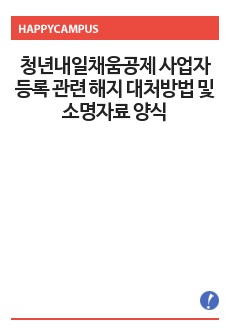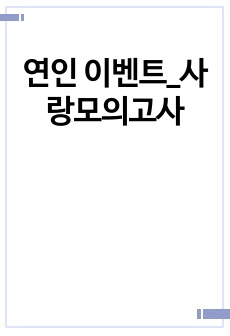소개글
"[A0] 서강대 현대생물학실험2 Gene cloning을 위한 Competent cell의 제작과 target DNA의 증폭과 정제"에 대한 내용입니다.
목차
1. Abstract
2. Introduction
3. Materials and Methods
4. Result
5. Discussion
6. Reference
본문내용
본 실험에서는 E.coli(DH5α)에 ice-cold CaCl2 solution과 42℃ heat shock을 처리하여 pUC19 vector를 transformation하였으며, transformation efficiency는 2×10^6 CFU/ug로 나타났다. Mahipal Singh에 따르면, DH5α strain에 pUC19 plasmid vector(2686 bp)를 transformation시킬 때, 42℃에서 30초간 heat shock을 준 뒤 10분간 ice incubation을 했을 때 가장 효율이 높았다[5]. 또한, E.coli의 strain과 CaCl2의 농도에 변화를 주면서 최적 효율을 찾은 연구에 의하면, pUC19 vector의 경우 0.5 M CaCl2에서 최적 효율을 나타냈다[6]. 따라서, 본 실험에서 heat shock 시간을 줄이고, ice incubation 시간을 늘리며, CaCl2의 농도를 증가시키면 효율이 높아질 수 있다. 그러나 앞선 연구들과는 전처리 과정에서 차이가 존재하며, 차이나는 모든 과정이 transformation efficiency에 영향을 미치므로 선행 연구와는 다른 결과가 도출될 가능성도 있다. 추가적으로, DH5α strain보다 XL1 blue strain을 이용했을 때, LB medium 대신 SOC medium에서 배양했을 때, DMSO나 PEG8000¬¬을 plasmid vector와 함께 첨가했을 때 효율이 높았다는 보고가 있다[7]. Optimization 실험을 통해 각 조건이 transformation efficiency에 영향을 미치는 이유에 대한 추론이 시도되고 있지만, 명확한 설명은 아직 부족하다.
참고 자료
Campbell, Urry, Cain, Wasserman, Minorsky, Reece(2019), Biology: A Global Approach, 11th ed, Pearson, p. 631.
Watson, Baker, Bell, Gann, Levine, Losick(2013), Molecular Biology of the Gene, 7th ed, Pearson, p. 23.
T.A. Brown(2016), Gene Cloning & DNA Analysis An Introduction, 7th ed, WILEY Blackwell, p. 78.
Ibid., pp. 159-164.
Mahipal Singh et al.(2010), Plasmid DNA Transformation in Escherichia Coli: Effect of Heat Shock Temperature, Duration, and Cold Incubation of CaCl2 Treated Cells, IJBB, Vol. 6, No. 4, pp. 561-568.
Gavin Lim et al.(2015), Differential Transformation Efficiencies Observed for pUC19 and pBR322 in E. coli May Be Related to Calcium Chloride Concentration, JEMI, Vol. 20, No. 1, pp. 1-6.
Zhiming Tu et al.(2005), An Improved system for competent cell preparation and high efficiency plasmid transformation using different Escherichia coli strains, Electronic Journal of Biotechnology, Vol. 8, No. 1, pp. 114-120.
Joseph Sambrook, David W. Russell(2001), Molecular cloning: a laboratory manual, 3rd ed, Cold Spring Harbor Laboratory Press, Ch.5, pp. 18-22, 26-28.
Ibid., Ch.5, pp. 29-32.




